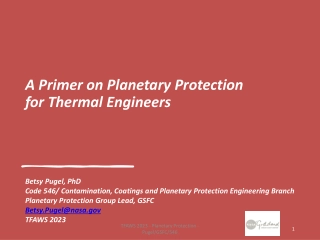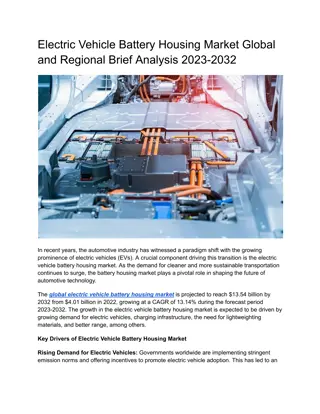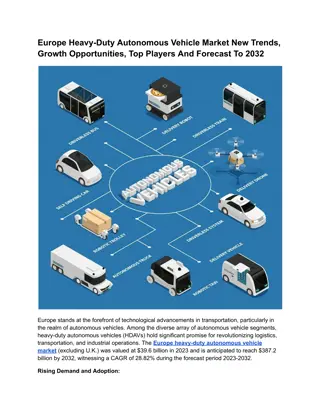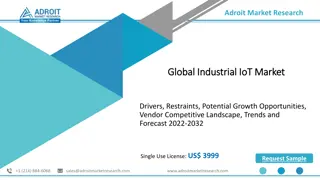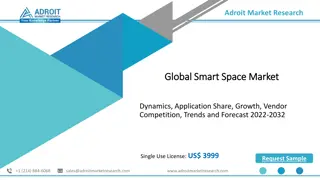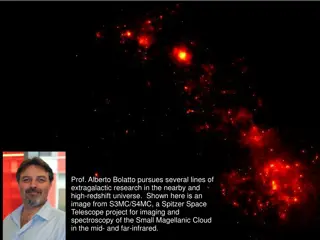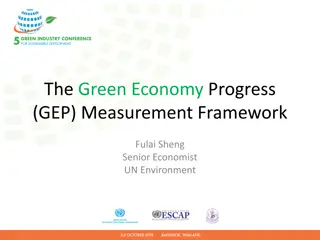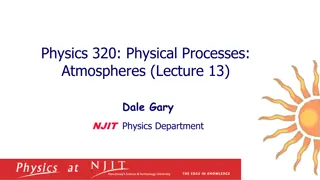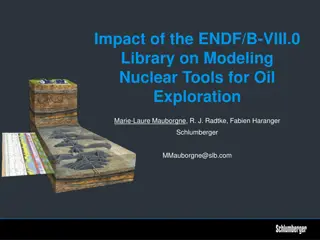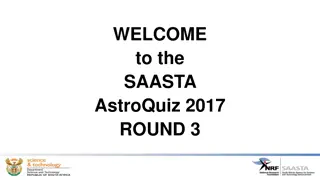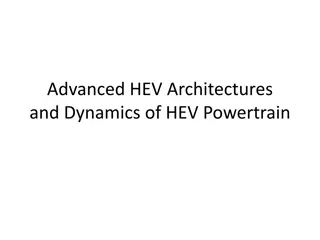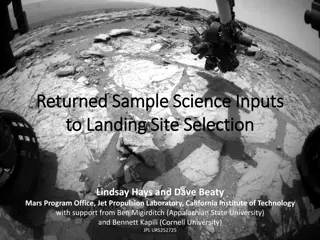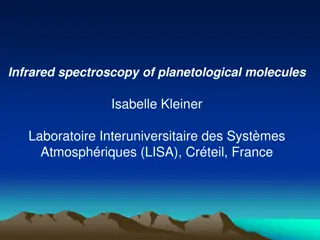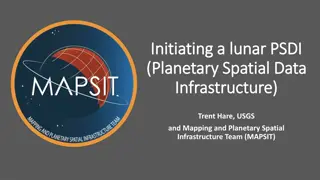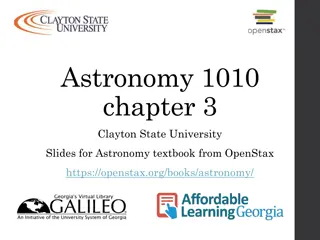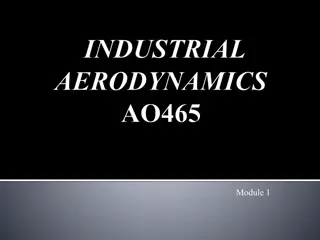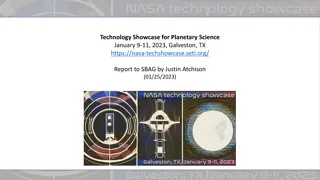Exploration Strategy for Planetary Science & Astrobiology 2023-2032
The decadal strategy outlines a comprehensive plan for planetary science and astrobiology, emphasizing the integration of human exploration activities with scientific objectives. Key elements include leveraging planned human space missions for new scientific opportunities and identifying areas of planetary science crucial for supporting human spaceflight endeavors. Strategic analysis across Moon and Mars operations highlights the importance of lunar missions in preparing for Mars exploration. Human exploration is seen as inspirational and beneficial on a national and global scale, with a focus on advancing lunar science objectives within the Artemis human exploration program.
Download Presentation

Please find below an Image/Link to download the presentation.
The content on the website is provided AS IS for your information and personal use only. It may not be sold, licensed, or shared on other websites without obtaining consent from the author.If you encounter any issues during the download, it is possible that the publisher has removed the file from their server.
You are allowed to download the files provided on this website for personal or commercial use, subject to the condition that they are used lawfully. All files are the property of their respective owners.
The content on the website is provided AS IS for your information and personal use only. It may not be sold, licensed, or shared on other websites without obtaining consent from the author.
E N D
Presentation Transcript
Origins, Worlds, and Life: A Decadal Strategy for Planetary Science & Astrobiology, 2023-2032 Summary of Findings & Recommendations regarding Human Exploration Presented by: John Grunsfeld & Jennifer Heldmann Co-Chairs, Human Exploration Working Group (HExWG) James Crocker, Brett Denevi, Caleb Fassett, Bethany Ehlmann, Bruce Jakosky
Planetary Science and Astrobiology Decadal Survey 2023-2032 Statement of Task The survey will also take into account planned human space exploration activities. The report should provide a clear exposition of the following: * An awareness of the science and space mission plans and priorities of NASA human space exploration programs and potential foreign and U.S. agency partners reflected in the comprehensive research strategy and identification of opportunities for cooperation, as appropriate; [Include] A discussion of the following: a. How planned and potential human space flight activities will provide new opportunities for planetary science; and b. What areas of planetary science will provide information needed to support human space flight activities.
Strategic Analysis Across Moon and Mars Operations on and around the Moon will help prepare for the first human mission to Mars GATEWAY TRANSIT HABITAT AND MARS TRANSIT Long Durations in Zero Gravity Crew Size Mobile Expedition Duration Mobile Exploration Range FOUNDATION SURFACE HABITAT HABITABLE MOBILITY PLATFORM Surface Fission Power In-Situ Resource Utilization Partial Gravity Operations LUNAR TERRAIN VEHICLE HUMAN LANDING SYSTEM Autonomous Robotics Systems & Contingency Crew Transportation
Human Exploration Human exploration is aspirational and inspirational, and NASA s Moon-to-Mars plans hold the promise of broad benefits to the nation and the world A robust science program provides the motivating rationale for sustained human exploration The advancement of high priority lunar science objectives should be a key requirement of the Artemis human exploration program PSD* should execute a strategic program to accomplish planetary science objectives for the Moon, with an organizational structure that aligns responsibility, authority, and accountability SMD** should have the responsibility and authority for integrating Artemis science requirements with human exploration capabilities * Planetary Science Division ** Science Mission Directorate 4
High-priority science can be enabled by humans at Mars Finding: A crucial driver of sustained human exploration is the ability of human explorers with appropriate training and mission planning to conduct and enable the highest quality, decadal-level science that expands humankind s understanding of Earth, the solar system, and the universe. Recommendation: NASA should engage with the science community to 1) define scientific goals for its human exploration programs at the early stages of program planning; and 2) ensure scientific expertise in field geology, planetary science, and astrobiology in its astronaut teams. Decadal Survey, page 19-3
NASAs Organizational Structure for Incorporating Science into Human Exploration DS analysis focused on lunar case (Artemis), but lessons learned are applicable to future Mars exploration. Finding: The systems engineering approach needed to incorporate science objectives and requirements needs to occur in the early stages of human mission planning and hardware development. The later such integration occurs, the greater the risk of prohibitive expense associated with scientific requirements and/or the exclusion of priority science altogether. Finding: The organizational structure for lunar science and exploration within NASA at the outset of Artemis has compromised the Agency s ability to ensure that the highest-priority scientific goals will be accomplished at the Moon because science requirements have not been adequately provided to or incorporated into the human exploration architecture. As a result, the scientific return from the first human landings in the Artemis program will not be as significant as it could be, and may be minimal. Finding: Absent an integrated, coherent strategy, it is unlikely decadal-level planetary science will be accomplished at the Moon through Artemis. Human exploration can be used to achieve lower-level science goals until Artemis incorporates top-level requirements capable of achieving decadal science priorities.
Human exploration of Mars Recommendation: PSD should have the authority and responsibility for integrating science priorities into the human exploration plans for Mars. Keys to successful implementation of science-driven human exploration at Mars include: (1) Integrating science and human exploration planning and expertise to ensure that adequate, accurate, and appropriate Mars-specific knowledge and experience are provided in support of human missions, and that scientific progress will be sustained and advanced by human missions to Mars. (2) Identification of robotic science missions with overlap with human exploration precursor measurement needs, human landing site-specific knowledge, or infrastructure capability, including delineating required versus desired data. (3) Providing opportunities within PI-led science mission competitions for additional funding if the mission can also serve the human exploration needs in (2). (4) Funding that transparently follows from the entity setting requirements to the entity implementing the project or mission such that both funding and management responsibility reside within the same office or organization.
NB: SpaceX / Starship is on contract with NASA as the HLS (Human Landing System) provider for delivering Artemis crew to the lunar surface. Commercial vehicles Finding: Commercial human spaceflight missions to the lunar and martian surfaces will provide unprecedented payload capacity and potentially offer tremendous opportunities for planetary science. These vehicles may lower the cost of surface access, which can enable a new paradigm for planetary science and astrobiology investigations, technology development and testing, and human exploration of space. Recommendation: NASA should develop a strategy to utilize opportunities to fly science payloads on commercial test flights and crewed missions to the Moon and Mars as such opportunities arise. Image Credit: SpaceX
International cooperation Finding: International participation in human programs has the benefit of (i) spreading the cost out over a larger number of participating entities and making it more affordable to each, (2) providing wider participation of scientists, engineers, and the public from different countries and cultures, and (3) enhancing international cooperation in peaceful endeavors. Finding: International participation carries with it enhanced risk, in terms of coordination and management of schedules, potential for increased cost, mismatch or miscommunication of requirements, and potential for withdrawal of partners at inopportune times. Finding: NASA s continued encouragement of international participation in human missions in the solar system (the Moon, Mars, Near Earth Objects, other potential targets) is beneficial as a way of enhancing the scientific return from the missions and of providing a forum for constructive and peaceful interactions between countries.
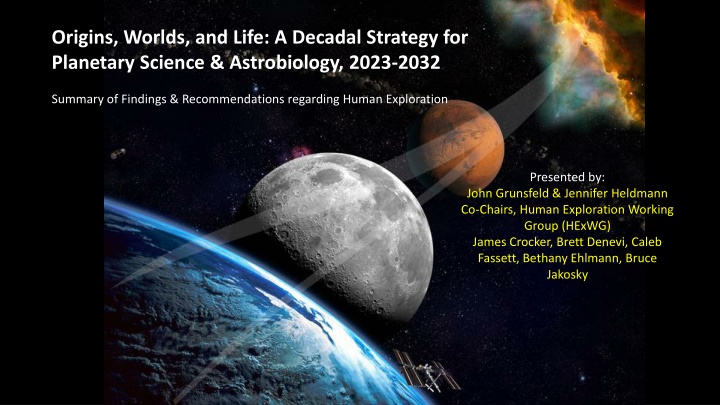

![❤[PDF]⚡ Planetary Ring Systems (Springer Praxis Books)](/thumb/21506/pdf-planetary-ring-systems-springer-praxis-books.jpg)
